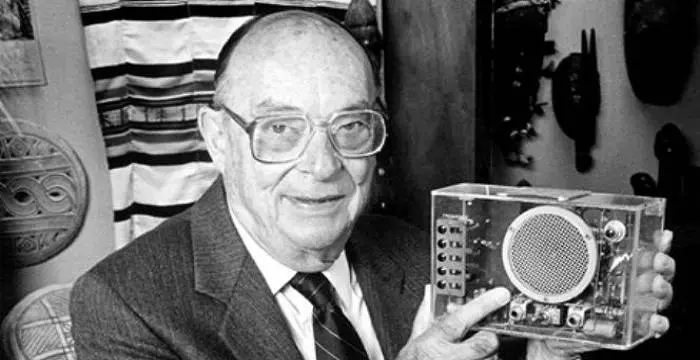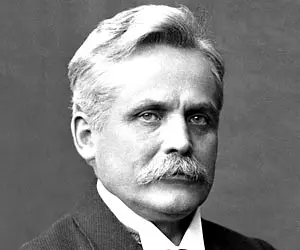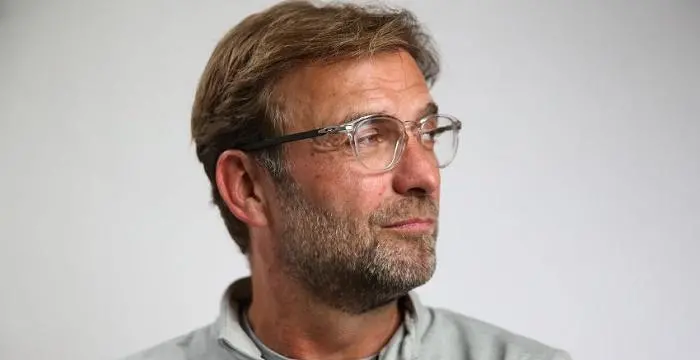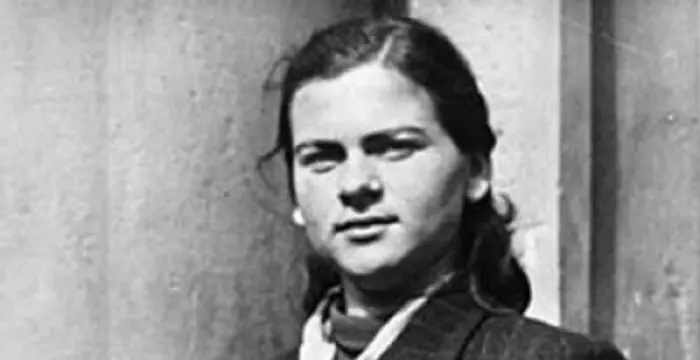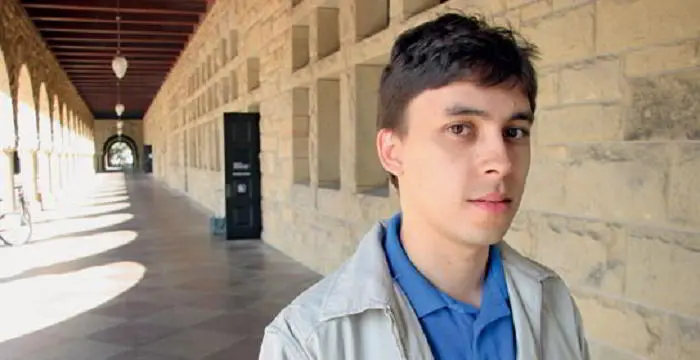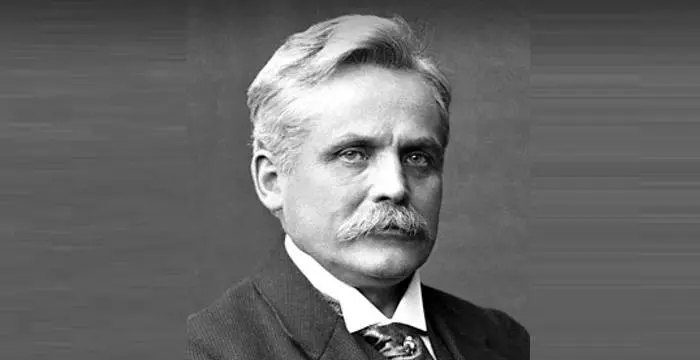
Wilhelm Wien - Nobel Laureate in Physics, Family and Family
Wilhelm Wien's Personal Details
Wilhelm Wien was a German physicist who won Nobel Prize in Physics for his groundbreaking work in thermal radiation
| Information | Detail |
|---|---|
| Birthday | January 13, 1864 |
| Died on | August 30, 1928 |
| Nationality | German |
| Famous | Scientists, Physicists, Nobel Laureate in Physics |
| Spouses | Luise Mehler (1898) |
| Known as | Wilhelm Carl Werner Otto Fritz Franz Wien |
| Childrens | Karl Wien |
| Universities |
|
| Birth Place | Gaffken near Fischhausen, Province of Prussia |
| Gender | Male |
| Father | Carl Wien |
| Sun Sign | Capricorn |
| Born in | Gaffken near Fischhausen, Province of Prussia |
| Famous as | Nobel Laureate in Physics |
| Died at Age | 64 |
// Famous Nobel Laureate in Physics
Wolfgang Pauli
Wolfgang Pauli was an Austrian-Swiss theoretical physicist, winner of Nobel Prize in Physics for his discovery of the ‘Exclusion Principle’. This biography of Wolfgang Pauli provides detailed information about his childhood, life, works & timeline.
Pierre Curie
Pierre Curie was a French physicist and Nobel laureate. This biography of Pierre Curie provides detailed information about his childhood, life, achievements, works & timeline.
John Bardeen
John Bardeen was an American physicist who won the Nobel Prize in Physics twice. This biography of John Bardeen provides detailed information about his childhood, life, achievements, works & timeline.
Wilhelm Wien's photo
Who is Wilhelm Wien?
Wilhelm Wien was a German physicist who won Nobel Prize in Physics for his groundbreaking work in thermal radiation. He is best known for Wien's displacement law of blackbody radiation and the Wien's distribution law (also known as the Wien approximation). Regardless of the fact that he received his early education at home and was expelled from his first school for poor academics, he performed pioneering work in the field of physics. After completing his doctoral degree under the guidance of the eminent physicist, Herman Helmholtz, he became his assistant and over a period of time served as a professor of physics at prestigious universities. He conducted trailblazing research in the field of thermal radiation and proposed laws defining the wavelength-temperature relation of a body. He also defined a blackbody—a body that appears black because it absorbs all radiation and radiates heat. He was instrumental in formulating an expression for the blackbody radiation which is correct in the photon-gas limit. He received the Nobel Prize in Physics for his displacement law concerning the radiation emitted by the perfectly efficient blackbody. He also made significant contributions to the study of cathode rays, X-rays and canal rays (positively charged atomic beams). His remarkable discoveries played a vital role in the development of quantum mechanics.
// Famous Physicists
Henry Cavendish
Henry Cavendish was a theoretical chemist and physicist, renowned for discovery of hydrogen and calculation of the mass of earth. To know more about his childhood, profile, timeline and career read on
Walter Kohn
Nobel Laureate Walter Kohn was an Austrian-born American theoretical chemist and physicist. Check out this biography to know about his childhood, life, achievements, works & timeline.
Nikola Tesla
Nikola Tesla was a Serbian-American inventor, best known for his development of alternating current electrical systems. This biography of Nikola Tesla provides detailed information about his childhood, life, achievements, works & timeline.
Childhood & Early Life
He was born on January 13, 1864 in Gaffken near Fischbach, a small town in East Prussia, to Carl Wien, a landowner and his wife, Caroline Gertz. He was their only child.
His family moved to a small farm in Drachenstein when he was a child. He was educated at home until the age of eleven. His parents hired a private tutor, who taught him to speak French.
In 1879, he was enrolled at a school in Rastenburg but was soon expelled from the school due to his poor academic performance. Later in 1880 he attended the city school in Heidelberg and graduated in 1882.
In 1882, he attended the University of Göttingen to study mathematics and natural sciences. In the same year, he also got enrolled at the University of Berlin where he received education in physics.
From 1883 to 1885, he studied at the University of Berlin under the supervision of German physicist and mathematician, Hermann von Helmholtz, and worked in his laboratory.
In 1886, he obtained his doctoral degree in physics from the University of Berlin with a dissertation on "The Diffraction of Light on Photographically Reduced Lattices."
After earning his doctorate, he returned to his family farm, which had been badly damaged by fire. Alongside studying physics on his own, he tried to restore the farm for the next four years but was forced to sell the property in 1890.
Career
In 1890, Helmholtz appointed him as his assistant at the newly created State Physical-Technical Institute in Charlotten-burg.
From 1896 to 1899, he served as a lecturer at the Rheinisch-Westfälische Technische Hochschule Aachen University and the University of Giessen.
In 1900, he was appointed the joint professor of physics at the University of Würzburg, as the successor of Wilhelm Roentgen, another German physicist.
In 1902, he was invited to succeed Ludwig Boltzmann as Professor of Physics at the University of Leipzig and in 1906, he was invited to succeed Drude as Professor of Physics at the University of Berlin; but he refused both these invitations.
In 1913-14, he also served as the Rector of the University of Würzburg. In 1913, he visited the United States as a lecturer at the Columbia University.
In 1920, he became the professor of physics at the University of Munich, once again succeeding to a position previously held by Roentgen.
From 1925 to 1926, he was also appointed the Rector of the University of Munich. During his tenure at Munich, he oversaw the construction of a new physics institute.
He also served as the co-editor of Annalen der Physik (Annals of Physics) from 1906 until his death in 1928.
Major Works
His best-known contribution to the investigation of thermal radiation is ‘Wien's Displacement Law’, which establishes a relation between the temperature of a Planck Blackbody and the wavelength that manifests maximum radiated power. It states that wavelengths emitted from the blackbody become shorter as the temperature rises.
He also devised a theoretical basis that provided a graphical explanation of the energy distribution curve known as ‘Wien's Energy Distribution Law’. The theory worked well but only for short wavelengths. Later the theory was corrected by Max Planck for short as well as long wavelengths and termed as ‘Planck's law’, which also led to the development of quantum theory.
Awards & Achievements
In 1911, he was conferred the Nobel Prize in Physics “for his discoveries regarding the laws governing the radiation of heat”.
Personal Life & Legacy
In 1898, he married Luise Mehler, his longtime lover from Aix-la-Chapelle. They were blessed with four children; Gerda, Hildegard, Karl and Waltraut.
During his years at Würzburg, he embarked on many trips to other European countries including Spain, England, Italy, and Greece. At Würzburg, he also found the time to pursue his life-long interests in History and the Arts.
He died unexpectedly on August 30, 1928 in Munich, Germany, at the age of 64.
// Famous Scientists
Juliane Koepcke
Juliane Koepcke is a German-Peruvian biologist, who was the lone survivor among the 92 passengers and crew of the ill-fated LANSA Flight 508 that crashed in the Peruvian rainforest on 24 December 1971. Know more about her life in this biography.
Henry Cavendish
Henry Cavendish was a theoretical chemist and physicist, renowned for discovery of hydrogen and calculation of the mass of earth. To know more about his childhood, profile, timeline and career read on
Konstantin Tsiolkovsky
Konstantin Tsiolkovsky was a Russian rocket scientist and a pioneer of astronautics. This biography provides detailed information about his childhood, family, personal life, career, achievements, etc.
Wilhelm Wien's awards
| Year | Name | Award |
|---|---|---|
Other | ||
| 0 | 1911 - Nobel Prize for Physics | |
Wilhelm Wien biography timelines
- // 13th Jan 1864He was born on January 13, 1864 in Gaffken near Fischbach, a small town in East Prussia, to Carl Wien, a landowner and his wife, Caroline Gertz. He was their only child.
- // 1879In 1879, he was enrolled at a school in Rastenburg but was soon expelled from the school due to his poor academic performance. Later in 1880 he attended the city school in Heidelberg and graduated in 1882.
- // 1882In 1882, he attended the University of Göttingen to study mathematics and natural sciences. In the same year, he also got enrolled at the University of Berlin where he received education in physics.
- // 1883 To 1885From 1883 to 1885, he studied at the University of Berlin under the supervision of German physicist and mathematician, Hermann von Helmholtz, and worked in his laboratory.
- // 1886In 1886, he obtained his doctoral degree in physics from the University of Berlin with a dissertation on "The Diffraction of Light on Photographically Reduced Lattices."
- // 1890After earning his doctorate, he returned to his family farm, which had been badly damaged by fire. Alongside studying physics on his own, he tried to restore the farm for the next four years but was forced to sell the property in 1890.
- // 1890In 1890, Helmholtz appointed him as his assistant at the newly created State Physical-Technical Institute in Charlotten-burg.
- // 1896 To 1899From 1896 to 1899, he served as a lecturer at the Rheinisch-Westfälische Technische Hochschule Aachen University and the University of Giessen.
- // 1898In 1898, he married Luise Mehler, his longtime lover from Aix-la-Chapelle. They were blessed with four children; Gerda, Hildegard, Karl and Waltraut.
- // 1900In 1900, he was appointed the joint professor of physics at the University of Würzburg, as the successor of Wilhelm Roentgen, another German physicist.
- // 1902In 1902, he was invited to succeed Ludwig Boltzmann as Professor of Physics at the University of Leipzig and in 1906, he was invited to succeed Drude as Professor of Physics at the University of Berlin; but he refused both these invitations.
- // 1906 To 1928He also served as the co-editor of Annalen der Physik (Annals of Physics) from 1906 until his death in 1928.
- // 1911In 1911, he was conferred the Nobel Prize in Physics “for his discoveries regarding the laws governing the radiation of heat”.
- // 1920In 1920, he became the professor of physics at the University of Munich, once again succeeding to a position previously held by Roentgen.
- // 1925 To 1926From 1925 to 1926, he was also appointed the Rector of the University of Munich. During his tenure at Munich, he oversaw the construction of a new physics institute.
- // 30th Aug 1928He died unexpectedly on August 30, 1928 in Munich, Germany, at the age of 64.
// Famous German peoples
Jordan Carver
Jordan Carver is a famous German model. Let’s take a close look at her personal life, including her age, career, net worth, achievements and some fun facts.
Jürgen Klopp
Jürgen Klopp is a German football manager, and a former professional football player. Check out this biography to know more about his childhood, family, personal life, etc.
Irma Grese
Irma Grese was a notorious German Nazi concentration camp guard during the Second World War. This biography profiles her childhood, life, horrifying acts, death and other facts.
Juliane Koepcke
Juliane Koepcke is a German-Peruvian biologist, who was the lone survivor among the 92 passengers and crew of the ill-fated LANSA Flight 508 that crashed in the Peruvian rainforest on 24 December 1971. Know more about her life in this biography.
Jawed Karim
Jawed Karim is a German-American internet entrepreneur, technologist and co-founder of the video-sharing website, YouTube. Check out this biography to know about his childhood, family, personal life, achievements, age, etc.
Charles Bukowski
Charles Bukowski was a German-born American novelist, short story writer and poet. With this biography, learn in details about his childhood, life, works, career and timeline
Wilhelm Wien's FAQ
What is Wilhelm Wien birthday?
Wilhelm Wien was born at 1864-01-13
When was Wilhelm Wien died?
Wilhelm Wien was died at 1928-08-30
Where was Wilhelm Wien died?
Wilhelm Wien was died in Munich, Germany
Which age was Wilhelm Wien died?
Wilhelm Wien was died at age 64
Where is Wilhelm Wien's birth place?
Wilhelm Wien was born in Gaffken near Fischhausen, Province of Prussia
What is Wilhelm Wien nationalities?
Wilhelm Wien's nationalities is German
Who is Wilhelm Wien spouses?
Wilhelm Wien's spouses is Luise Mehler (1898)
Who is Wilhelm Wien childrens?
Wilhelm Wien's childrens is Karl Wien
What was Wilhelm Wien universities?
Wilhelm Wien studied at Humboldt University of Berlin, Georg-August University of Göttingen
Who is Wilhelm Wien's father?
Wilhelm Wien's father is Carl Wien
What is Wilhelm Wien's sun sign?
Wilhelm Wien is Capricorn
How famous is Wilhelm Wien?
Wilhelm Wien is famouse as Nobel Laureate in Physics


